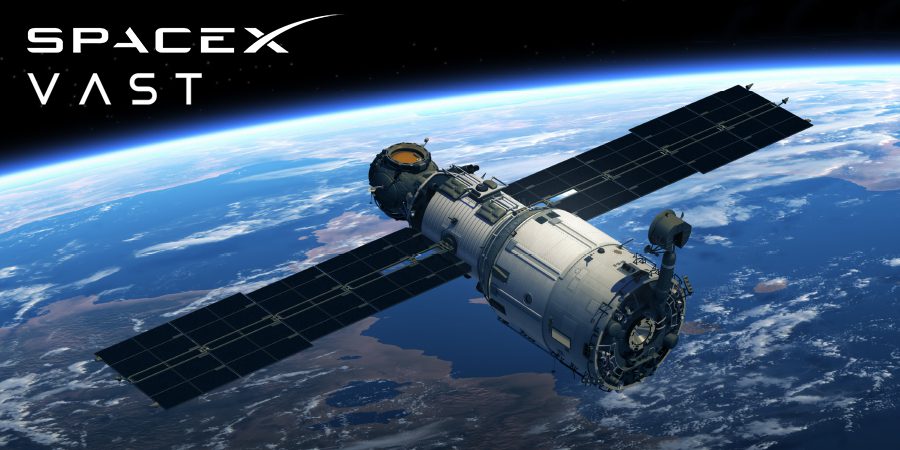Delving into the future of space exploration, this article brings into the spotlight the promising alliance between SpaceX and Vast.
Together, they are setting the stage for the grand unveiling of Haven-1, the world’s first commercial space station.
We will explore the unique features of this ambitious project, the visionary minds behind it, and the implications of this revolutionary milestone in the history of human space exploration.
Key Takeaways:
- Vast and SpaceX collaborate to launch Haven-1, the first commercial space station, in August 2025.
- Haven-1 will initially operate independently, with future plans to link it with other modules to form a larger station.
- The station will host its first human occupants in the SpaceX Dragon crew capsule.
- Haven-1 will provide an extended-stay destination for Dragon flights with facilities for science, research, and in-space manufacturing.
- Vast is open to bookings for space agencies, professional astronauts, and private individuals for scientific or philanthropic work.
- Vast’s ultimate goal is to construct a 100-meter-long, multi-module artificial gravity space station.
- Vast will leverage the life support systems already developed for SpaceX’s Dragon spacecraft.
- Other companies, including NASA-backed ones, are also planning to develop private space stations.
The Unveiling of Haven-1: A New Era in Space Exploration
The curtain is about to be lifted on a new epoch in space travel.
Haven-1, the world’s first commercial space station, is poised for launch in August 2025.
This groundbreaking initiative is the brainchild of Vast, a forward-thinking startup.
Last year, Vast made headlines with its audacious plan to construct a 100-meter-long artificial gravity space station.
The initial manifestation of this vision is Haven-1.
Designed to initially function independently, the station is destined to be part of a larger Vast complex when it links with subsequent modules.
The Role of SpaceX in the Launch of Haven-1
SpaceX, the brainchild of visionary entrepreneur Elon Musk, plays an integral role in this landmark project.
The Falcon 9, one of SpaceX’s renowned rockets, will propel Haven-1 into orbit.
Moreover, the first human inhabitants of Haven-1 will be transported there via SpaceX’s Dragon crew capsule.
This collaboration between SpaceX and Vast not only underlines the shared ambition of these two companies but also the spirit of innovation that drives the private space industry.
Inside Haven-1: What to Expect
Once operational, Haven-1 will serve as a destination for extended-stay Dragon flights.
Created with the intention of providing a cozy space for a team of four individuals, the station will go beyond simply presenting an awe-inspiring panorama.
It will serve as a hub for scientific research, space-based manufacturing, and even hold the possibility for a touch of leisure (perhaps a mini bar?).
The station will be equipped with round-the-clock Wi-Fi connectivity and a power supply, making it a home away from home for its inhabitants.
Who Can Visit Haven-1? Booking Options and Potential Visitors
Vast is open to all comers.
The company is currently accepting reservations for Haven-1’s first human occupants, known as Vast-1.
National space agencies, professional astronauts, and private individuals with a penchant for science or philanthropy are all welcome.
Vast has also reserved a second SpaceX mission, Vast-2, slated for 2026, proving that they are betting big on the demand for commercial space travel.
Vast’s Vision: A Glimpse into the Future of Space Stations
The launch of Haven-1 is just the beginning for Vast.
Their ultimate goal is to build a colossal, 100-meter-long, multi-module space station, complete with artificial gravity.
This incredible feat will be achieved by spinning the station, harnessing the centrifugal force to simulate gravity.
The planned launch vehicle for this behemoth is none other than SpaceX’s Starship, adding yet another layer of collaboration between these two pioneering companies.
Competing Visions: The Race for Private Space Stations
While Vast and SpaceX are making strides, they’re not alone in this cosmic race.
Several other companies, including some backed by NASA, are also gearing up to develop their private space stations.
Projects such as Starlab by Nanoracks, Lockheed Martin and Voyager Space, and Axiom’s own orbital platform, are hot on the heels of Haven-1.
With these ventures in the pipeline, the future of space exploration is not just about government agencies anymore.
The private sector is stepping up, bringing with it a new dynamism and sense of competition.
As for the International Space Station, it has been given the green light to remain operational until 2030.
Yet, the rise of these private space stations indicates a changing of the guard may be on the horizon.
Conclusion
The partnership between Vast and SpaceX marks a significant leap towards the democratization of space.
The launch of Haven-1 is more than just another spacecraft; it’s the dawn of a new era where space exploration is not solely in the hands of governmental agencies but opens up to commercial entities and even private individuals.
As we edge closer to the projected launch date in August 2025, all eyes are trained on this pioneering project.
With Haven-1, space becomes more accessible, offering opportunities for scientific discovery, technological advancement, and maybe even space tourism.
The race is definitely on, and the goal is not just to explore, but to inhabit, the final frontier.
As we stand on the precipice of this new age, one thing is certain: the sky is no longer the limit. Our dreams and ambitions are now limited only by how far we’re willing to venture into the cosmos.
The journey towards commercial space stations has begun, and there’s no looking back.
The future is out there, amongst the stars. And thanks to the vision of companies like Vast and SpaceX, we’re on our way to meet it.
 Sections of this topic
Sections of this topic
















